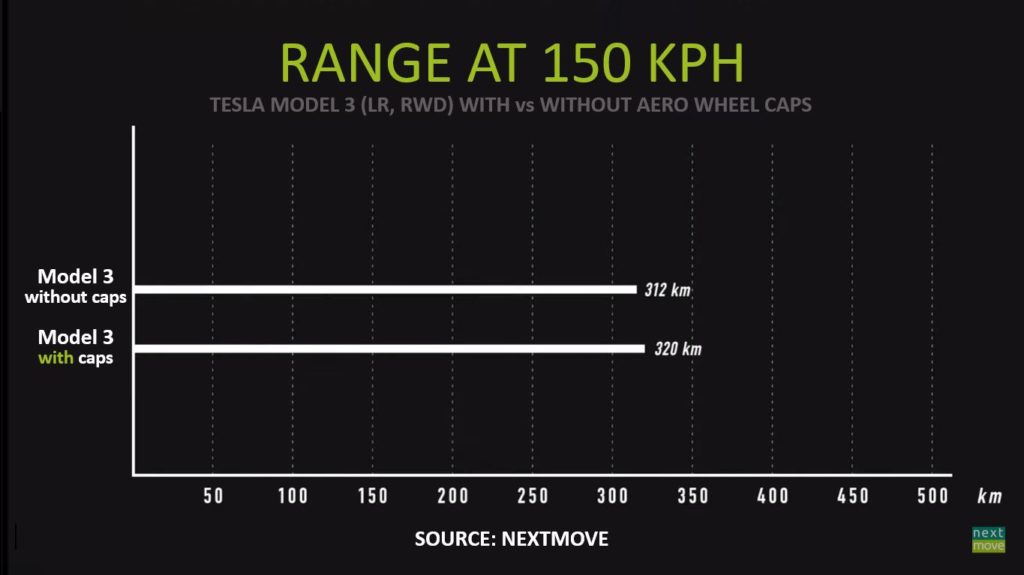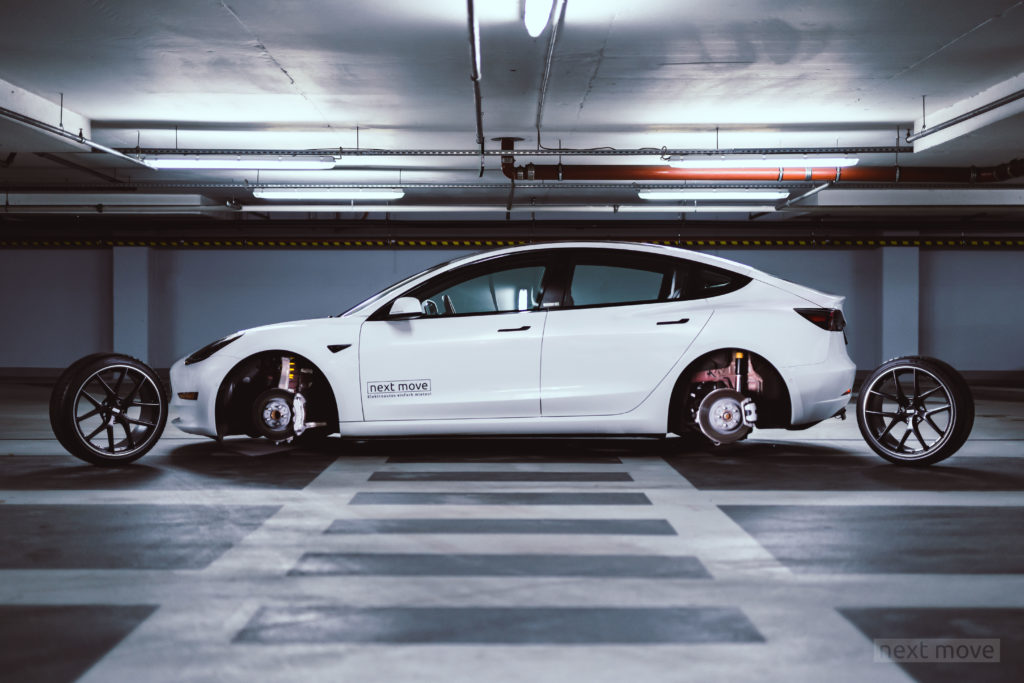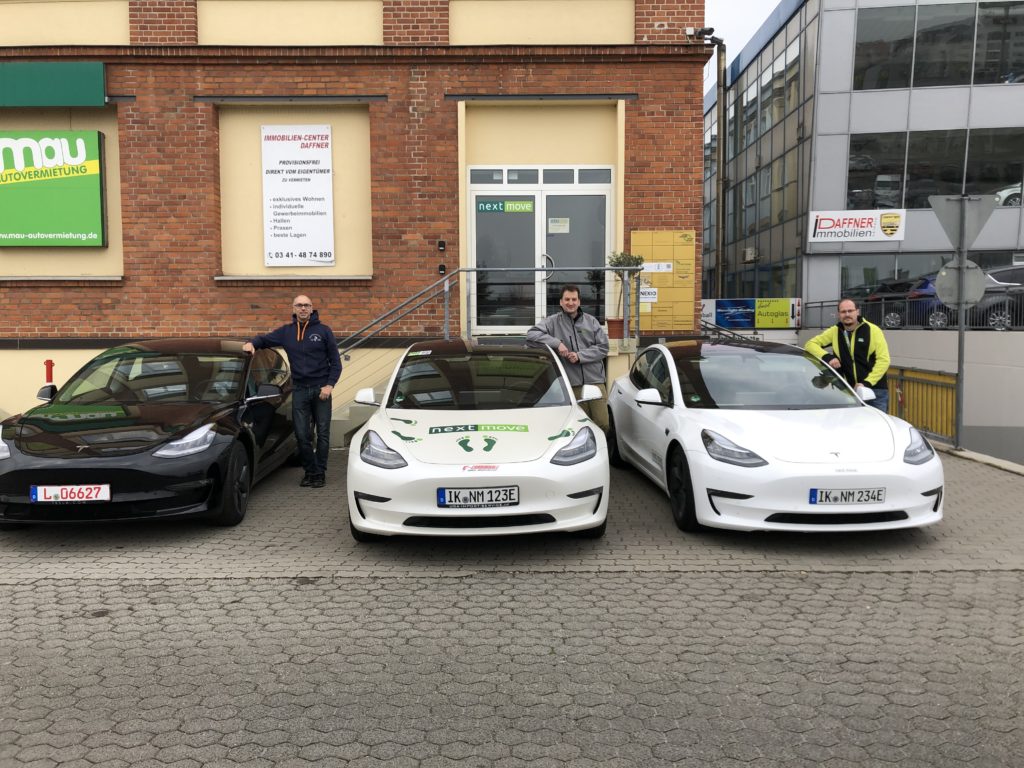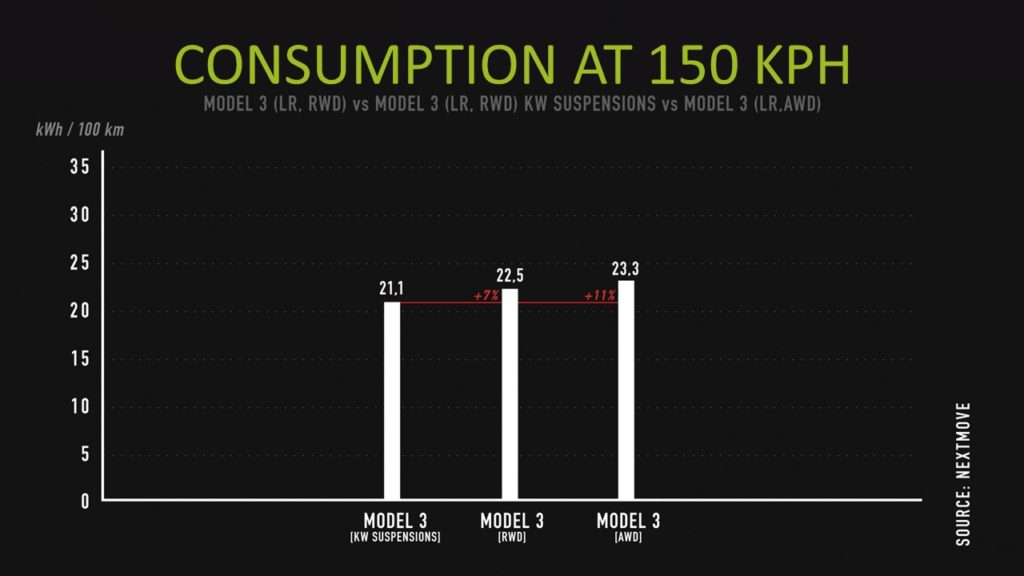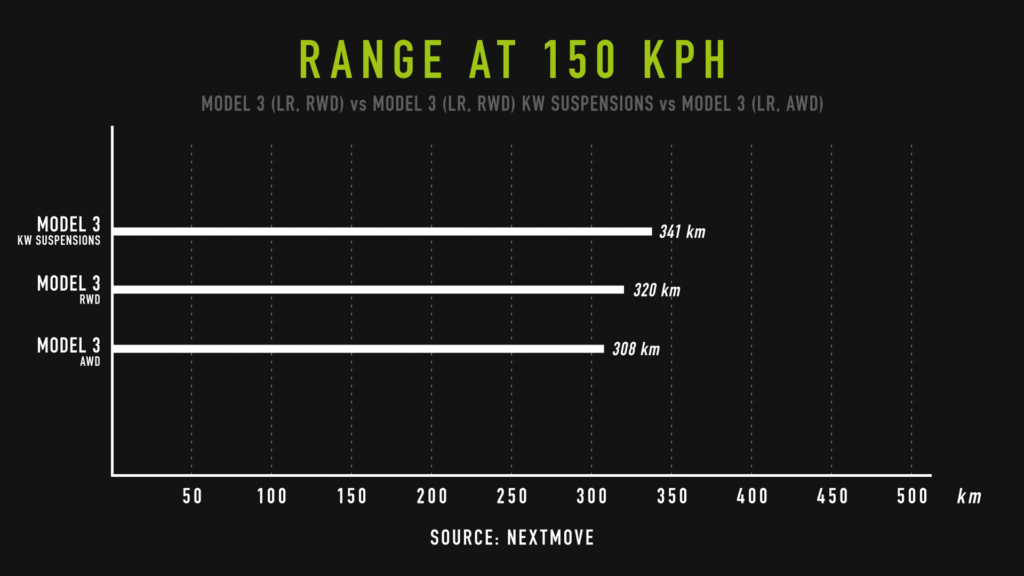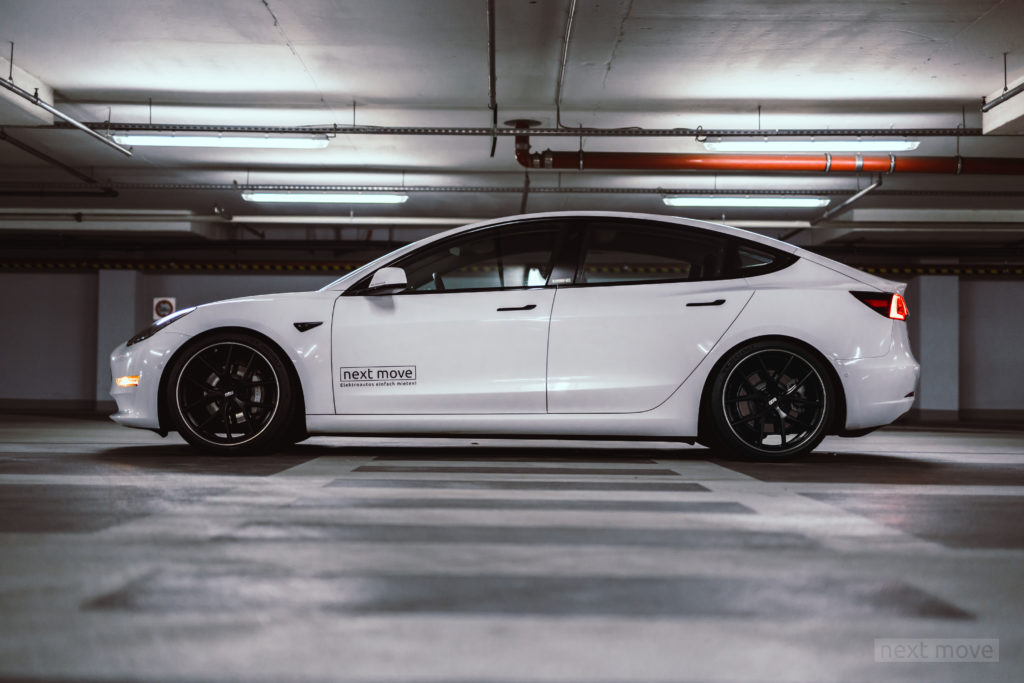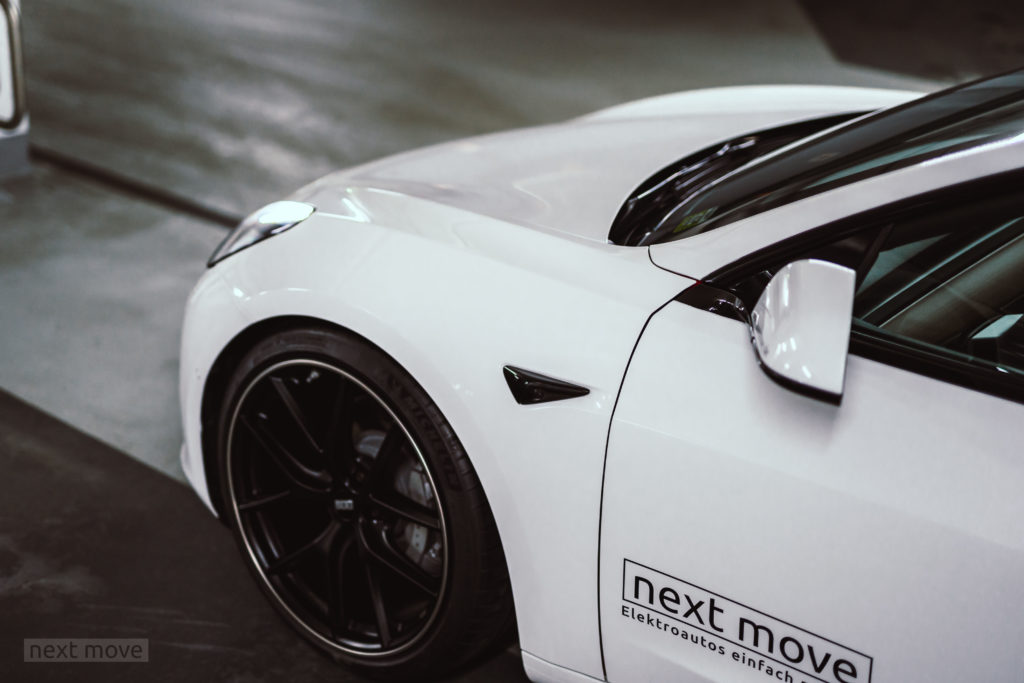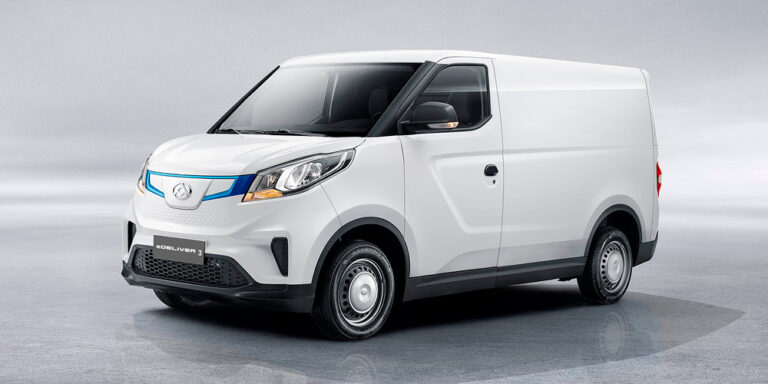- nextmove tested the impact of the new KW coilovers for Tesla Model 3 on efficiency
- 7% more range on the German Autobahn with lowered suspension
- Rear Wheel Drive with 4% more range than All Wheel Drive
nextmove teamed up with KW suspensions automotive GmbH to develop the next generation of high performance coilovers to maximize fun and performance of the Tesla Model 3 on European roads.
To check for possible real life ramifications on efficiency, we performed two test drives on different days under different conditions.
In a nutshell:
At high speeds lowering your Tesla Model 3 has a 7% bigger impact on efficiency than the Aero Wheels with 3%. This improves the range from stock 320 km (199 mi) to 341 km (212 mi) with coilovers. A massive 21 km increase in range.
This test is on Youtube (with English subs), as is our prevoius video testing the Aero Wheels. And here is the blog post concerning the Wheels.
On to the nitty gritty:
Test 1: Tesla Model 3 vs. Tesla Model 3
Both rear wheel drive with Nokian winter tires and aero wheels. The only difference: One has the “KW coilover Variant 3” suspension installed. It was lowered 3.5 cm (1.4 inches) compared to the Tesla standard suspension
We drove the first round with 150 kph (93 mph). AC on 19 degrees, 3.1 bar tire pressure (44,96 psi). Use of Autopilot only on clear roads. Chill mode engaged.
We choose our usual test route: connecting several different Autobahns (A9, A14, A38) to a 94 km (58,4 miles) circle track, with the beautiful City of Leipzig in the center.
The stock Model 3 consumed 227 Wh/km (~ 365.3 Wh/m) and the one with KW coilovers 217 Wh/km (~ 349.2 Wh/m). The first test showed a difference of 1 kWh per 100 km at 150 kph, or 4.5%, in favor of the lowered EV.
Test 2: Tesla Model 3 vs. Model 3 vs. Model 3 LR AWD
To collect more data points and reduce possible errors, we setup another test several days later.
This time on summer tires, and we brought a third car: the Tesla Model 3 LR AWD. We drove three rounds around Leipzig on an early Sunday morning. Almost empty roads, so perfect conditions for a test to determine minor differences in consumption.
We totaled about 800 km (497 miles). There were only minor deviations between the rounds for each car. But at the same time significant differences between the cars. This hints to resilient test results.
Model 3 with RWD and lowered KW suspension: 211 Wh/km (~ 339.6 Wh/m)
Model 3 with RWD and standard suspension: 225 Wh/km (~ 362.1 Wh/m)
And the AWD with 233 Wh/km (375 Wh/m)
The Model 3 with standard suspension consumed 7% more than the one with lowered suspension. And the AWD car used 11% more of its charge.
What are the consequences for range on long distances?
Based on the assumption that 72 kWh can be taken from the battery, Model 3 RWD with customized lowered suspension would be good for 341 km (212 mi).
The standard RWD would last 320 km (199 mi), and the AWD would achieve 308 km (191 mi) of range. That´s a 21 km (13 mi) range difference between the two RWD.
But why?
Lowering the suspension not only optimizes road handling, but also reduces the turbulence under the car, and therefore the overall drag. A well studied fact, commonly known in the racing industry.
In combination with a flat underbody, a pressure differential is generated by the different air speeds on top and bottom of the car. This “sucks” the vehicle to the road and increases the grip substantially. Regarding the flat underbody of the Tesla (no muffler, no gear tunnel),
a similar effect on the Model 3 wouldn’t be surprising at all.
A proper test in a wind tunnel would be very interesting, and totally awesome. So, if you have one at your disposal, just give us a call. 😉
We tested on 18″ wheels. On 19″ or even 20″ Performance wheels the cars would consume considerably more. Higher speed equals higher drag, and we tested at 150 kph. According to physics drag increases dramatically with speed. Therefore the savings should increase dramatically, too.
Nerd Alert:
Thus, if drag is proportional to the square of speed, then the power needed to overcome that drag is proportional to the cube of speed (P ∝ v3). You want to ride your bicycle twice as fast, you’ll have to be eight times more powerful. Source: https://physics.info/drag/
Conclusions:
The Model 3 RWD is more efficient on the Autobahn than the AWD. And the Model 3 with the lowered suspension is more efficient than the standard version. At high speeds lowering your Model 3 has with 7% a bigger impact on efficiency than the Aero Wheels with 3%. You can find our video testing the Aero Wheels here, and here is the blog post.
Besides the great look, and the superior handling, changing the stock suspension to the custom KW coilovers can expand your range, safe time and money on charging, and even may prolong the lifetime of your battery through to less charging cycles.
The cost for the KW coilovers for the RWD Model 3 is 1,999 € For the AWD it´ll be at about 2,300 €. If you are interested in the KW coilovers for your Model 3, please contact Christian Simon: c.simon[at] nextmove.de
For all the details watch the full test on our YouTube Channel “nextmove”.
Fell free to use our charts, photos or parts of the Video to spread the word of clean and sustainable transport. Just credit us the usual way. And if you really want to make our day: Give us a shout-out and link to our YouTube Channel. Much appreciated! Collabs are always welcome.

